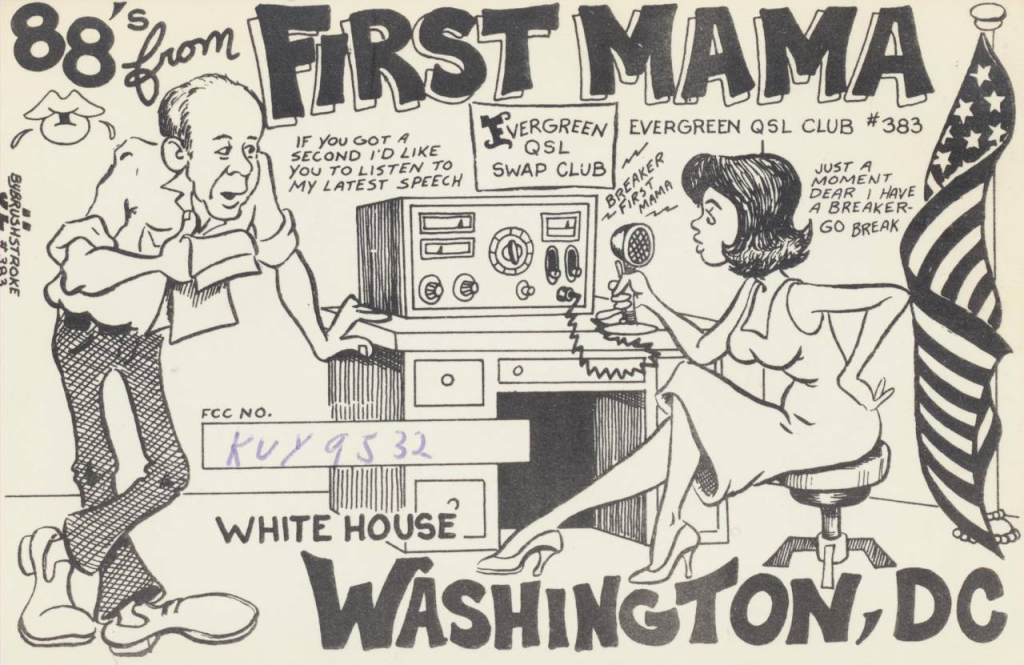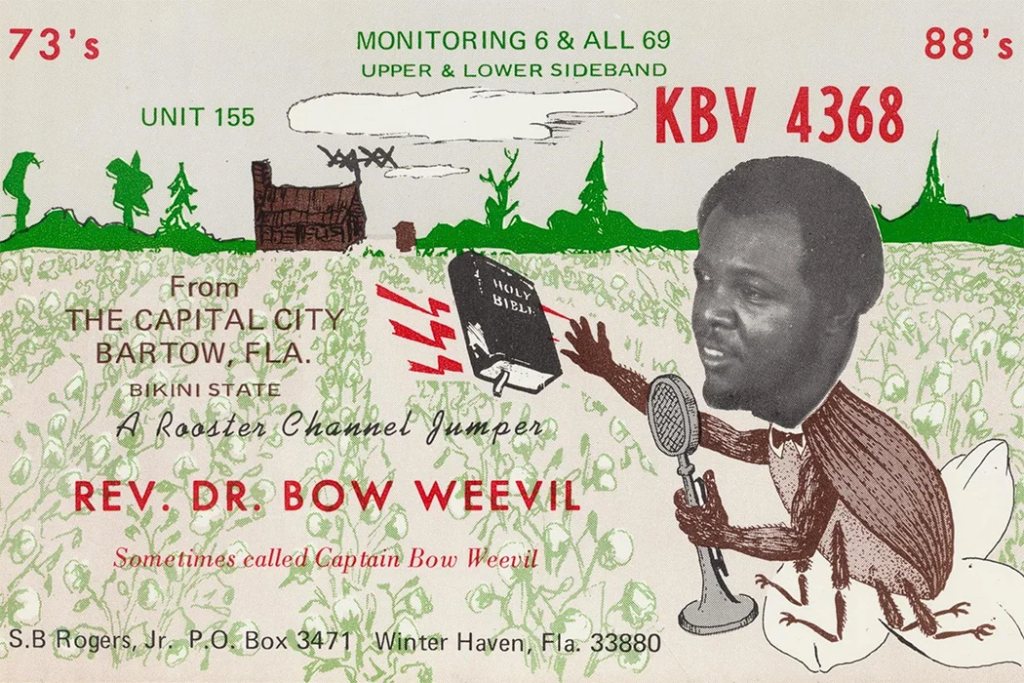
The Federal Communications Commission (FCC) is an independent agency of the United States government that regulates communications by radio, television, wire, satellite and cable across the United States.
Radio waves are often defined as electromagnetic radiation at frequencies below 300 GHz with wavelengths, greater than 1 mm. Yes, those two measurements are related to the speed of light in the equation c= λν = lambda multiplied by nu, where c = speed of light. λ = the wavelength in meters. ν = the frequency in Hertz. The fastest recorded speed of light is 299 792 458 m/s, almost 300 Mm/s = 3 x 108 m/s, which is the figure used in most calculations. Wavelength and frequency are inversely proportional: the shorter the wavelength, the higher the frequency, and vice versa. All electromagnetic radiation, regardless of wavelength or frequency, travels at the speed of light. Frequency refers to the number of full wavelengths that pass by a given point in space every second.
Television also used radio waves, initially, but was called terrestrial = earth based (in Europe and Latin America) = over-the-air = broadcast (north America). This required both the TV station transmitter and receivers to be equipped with antennas.
Wire probably refer to POTS = Plain old/ ordinary telephone service/ system, but originally Post Office telephone system, a retronym for voice-grade telephone service employing analog signal transmission using copper wire, available in the U.S. from 1876 until 1988. Telegraphy initially also involves wire. Telex was originally associated with telegraphy, and is cryptically described as a switched network of teleprinters. The difference between wire and cable is probably related to bandwidth. Cable is exponentially greater, allowing it to carry multiple high-definition television channels, while telephone wires compressed the range of sound so that it was barely audible.
In 1945, the FCC developed a radio band for personal communication, that included radio-controlled model airplanes and family and business communications. By 1948, CB radios were developed for operation on the 460–470 MHz UHF band. There were two classes of CB radio. Class A had its transmitter power limited to 60 W. Initially tube based transceivers were used. At the time, it followed normal American radio usage with 50 kHz channel spacing, and frequency modulation (FM) with ±15 kHz transmitter deviation. Class B Citizens used a different set of 461 MHz channels and was limited to 5 watts output. Business users were restricted to Class B.
Some people want to name a single individual as the inventor of CB radio. They often point to Al Gross (1918 – 2000). Most CB radio characteristics had been developed separately for use in other types of radios. Thus, a CB radio incorporated a package of characteristics that initially met the frequency, modulation and power characteristics specified by the FCC. Gross patented a number of telecommunications related patents, but none of them should be described as inventing the CB radio. Sorry, Al!
In the 1960s, the UHF 450–470 MHz band was re-allocated to 25 kHz channels. This meant transmitter deviation was reduced to ±5 kHz. This doubled the number of channels available across the entire 450–470 MHz band. The previous Class B channels were re-allocated to other radio services.
Initially, CB users were required to be licensed. About 800 000 users were licensed from 1966 to 1973. It hit 12 250 000 by the end of 1977. Add an additional 10 % for unlicensed users.
The 1973 oil crisis caused by the OPEC oil embargo, followed by an American nationwide 55 mph speed limit, was designed to improve fuel consumption. CB radios were especially important to truckers, allowing them to find available fuel, and to avoid speed traps. Other people soon realized that CB radios provided economic benefits, before they were eclipsed by social benefits. CB slang soon reached new heights of popularity.
In popular culture, C. W. McCall = Billie Dale Fries (1928 – 2022), recorded Convoy, a 1975 hit song told about a group of rogue truckers. Before the release of this song, US CB sales volume was about 150 000 units a year. After its release, this increased to 7 million units a year. New companies including Cobra, Midland and Royce were formed, and rapidly increased production capacity. By 1976, General Motors was offering a factory installed CB-radio option that including an integrated tape deck. I hope anybody contemplating buying a new GMC product, will ask their dealers if that option is still available, and report their response in a comment.
In the 1970s, and later, there were many films that featured CB radios. Two of the most influential were: Smokey and the Bandit (1977) and Convoy (1978) also encouraged CB usage. These were both action films populated with anti-establishment characters. My preferred CB film is Citizen Band/ Handle with Care (1977) that looked more at the people in front of the radios. Film critic John Simon (1925 – 2019) described it as: a lovely, hilarious, semisatirical folk comedy, only needing a better ending.
In the 1970s, Class B transmission power was increased to 50 W. However, most of the 460–470 MHz band was reassigned for business and public-safety use.
From the start, Afro-American CBers engaged in informal radio experiments. CB radio was seen as a way for these radio operators to achieve distinct social and economic benefits, using methods that flouted FCC regulations. By 1959 they were ready to form the Rooster Channel Jumpers, a national network of Afro-American CB users across the US, with chapters in major cities. It had a formal governance structure, and blue and gold uniforms for members. They regularly used their equipment to engage in shooting skip. This allowed the signal to go much further than the permitted 150 mile FCC limit.
In 1978, about 10 000 Rooster Channel Jumpers met in Dallas for the club’s annual convention, to promote the use of CB channels specifically to help African-American communities benefit economically, and socially.
Hate groups, notably the Ku Klux Klan, also used CB radios to organize racial terror activities by keeping each other informed about the movement of law enforcement operatives, as well as the location of their targets, that included civil rights activists.
Afro-American CBers responded by setting up new community organizations. For example, the Deacons for Defense and Justice, in Jonesboro, Louisiana, used CBs to ensure a rapid response to any apparent or real community threat. This invisible, yet connected and mostly unsurveilled communications network created a community of voices that allowed them to respond to racist violence. They created an audible African-American geography where everything, including their slang, resulted in a shared technoculture.
Citizen’s band radio reached all levels of American society in the 1970s. It is fascinating because it was that era’s great equalizer. Gerald Ford (1913 – 2006) became vice president in 1973, when Spiro Agnew (1918 – 1996) pleaded no contest to tax evasion and resigned. Ford then became president when Richard Nixon (1913 – 1994) resigned due to the Watergate scandal in 1974, but was defeated in the election of 1976. Ford is the only American president and vice president to serve without being elected to either office.
First Lady Betty Ford = originally, Elizabeth Anne Bloomer (1918 – 2011) was an active CB user, with license KUY9532. Her QSL card, shown above, uses the handle = radio nick name, First Mama. 88 = hugs and kisses. Most operators just stick to 73 = best wishes.
Betty Ford was outspoken, and more widely admired than her husband. In 1976, there were no women in the Senate, although there had been starting in 1921. There were 19 women in the House of Representatives.
CB radio provided a communications tool to reach people who were otherwise overlooked.

Enlightening questions, embarrassing answers and a note on Marine VHF radio
Have you ever owned a CB radio, Brock? Yes, one came with a sailboat I bought in the 1990s. People who could not afford a Marine VHS radio often installed a CB radio. Since I had a Marine VHF certificate, I expected to have a Marine VHS radio installed on board. That never happened. What was the fate of the CB radio? I gave it away, to a friend, a local farmer, who died soon after. What brand and model was it? I can’t remember.
To understand why people used CB radios, it is instructive to look at something similar, Marine VHF radio. On any waterway, emergencies can happen to any vessel, and it is important for affected operators to be able to communicate their distress, to everyone.
Wikipedia tells us: Marine VHF radio is a worldwide system of two way radio transceivers on ships and watercraft used for bidirectional voice communication from ship-to-ship, ship-to-shore (for example with harbormasters), and in certain circumstances ship-to-aircraft. It uses FM channels in the very high frequency (VHF) radio band in the frequency range between 156 and 174 MHz, inclusive, designated by the International Telecommunication Union as the VHF maritime mobile band.
Channel 16 is the International distress frequency. Monitoring it is essential. It is used all over the world to report emergencies and call for help. It can also be used by appropriate agencies to issue important information and weather warnings.
Channel 9 is specifically used for the hailing of non-commercial vessels. It is optional but useful to monitor this channel. When two vessels want to communicate, they agree on another channel, then then move over there to communicate. Monitoring of channel 9 is optional.
I see a similar value with CB radio. One can find out about traffic difficulties and, if necessary, plan an alternative route. One can find the status of energy stations.
A comment on race/ ethnicity
Many terms have been used to describe people of African-American origins. These include: Negro = black in Spanish and Portuguese, Colored and Black. This last one seems to be increasing in popularity, and is found in phrases like, Black lives matter. In 1989, Jesse Jackson (1941 – ), a civil rights activist, promoted African American. I am a product of my age, and have tried to follow Jackson’s advice. The first known use of African American was found in a sermon published in Philadelphia in 1782 that was written by an unknown person, described as: an African American. American in this context can refer to USA, North America or every part of the Americas (North, Central, Caribbean, Latin or South). This is an easy way to distinguish people of varying ethnicities, such as European Americans, Asian Americans or Native Americans, but only where referencing ethnicity is not prejudicial.
Conclusion
26–27 MHz CB radio is the oldest personal radio service and is used in nearly every country worldwide, with many countries and regions copying the United States 40-channel frequency plan. In many countries, CB radio is less popular due to the availability of other personal radio services that offer shorter antennas and better protection from noise and interference.

